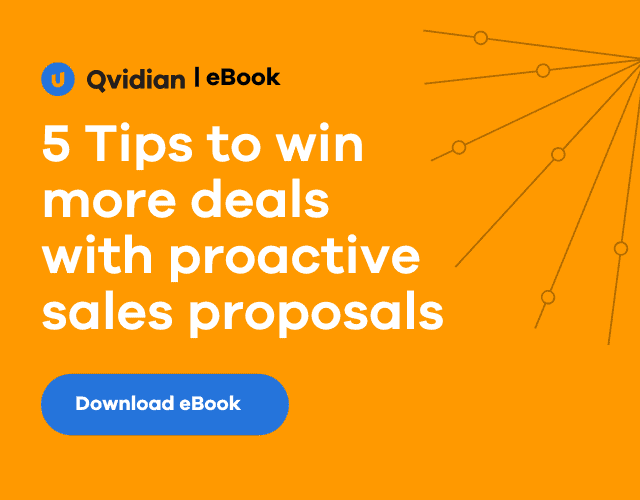Completing RFP and proposal responses is the first step toward gaining a new client or signing a lucrative contract. Unfortunately, completing an RFP isn’t good enough. You have to have a strategy to *win* the RFP. Just doing the work won’t get you very far, and relying on RFP response software won’t solve all your problems.
To improve your RFP response rate, you need a strategy and a solid team.
There are four essential ingredients to a successful RFP and proposal responses:
- People
- Process
- Content
- Technology
As with any good recipe, you need to know how to put the ingredients together to make the dish. In the case of RFP and proposal responses, as Eugene Victorov wisely puts it, “People use processes, supported by technology, to elaborate and operate their knowledge.”
Step One: People
As with any team, it’s essential to build the best one you can. First, identify your key stakeholders and take time to understand what unique skills, knowledge and perspective each of them bring to the table. Second, make sure that you have buy-in from senior management from the very beginning. You won’t get anywhere without the support of your leadership. Third, make sure you have the right people on your RFP response team. You need teammates with the right skills, experience and attitude to succeed.
In most cases, the roles collaborating in RFP and proposal responses include:
- A proposal manager
- A proposal specialist
- A content manager
- A sales professional
- Multiple subject matter experts
When it comes to your subject matter experts, make sure to pull from a wide variety of areas. This may include product, product management, engineering, marketing, consulting, professional services, and legal.
Another helpful addition could be an industry expert, who is knowledgeable about the landscape of the industry. Bringing them in early, rather than waiting until you share the RPF with stakeholders could save you costly and time-consuming rewrites.
In large organizations, there may be multiple proposal managers and specialists. In smaller ones, the same person may wear several hats.
Step Two: Process
Now that you have your dream team assembled, it’s time to think about your process. The best place to start is by identifying the fundamental steps. Ask yourself, what processes do we need in order to be successful? These initial steps can be used to develop a process framework that you can build on. Once you have the basics defined, you can take a more detailed look at process variations, exceptions, interdependencies and supporting processes.
One of the most important aspects of a robust process framework is Knowledge Management (KM). In organizations with strong KM processes, knowledge flows freely. For the end-user, getting the knowledge they need is simple and easy. But an effective KM team knows what’s happening under the surface. They can quickly identify bottlenecks, reroute, and measure inputs and outputs.
The most successful organizations know how to facilitate collaboration, uncover innovations, and easily share information with their employees when they need it.
When you have your processes defined, it’s time to bring in the larger group. Review the process framework with your stakeholders. Ensure that each of your stakeholders and every member of your team knows what’s expected from them. They may also be able to point out possible gaps and potential issues that you missed.
Step Three: Content
And a positive customer experience can be summed up in the old, yet still very relevant, marketing adage: “the right content for the right customer at the right time.” This goes for RFP and proposal responses as well. While leveraging automation and templates can make the job go more smoothly, every piece of content in your RFP response should be tailored to that specific customer.
Content processes should follow the customer journey—from planning and creation to distribution and analysis. These processes allow organizations to zero in on what actually impacts buying decisions. Take the time to understand your customer’s business objectives, and dig into why they are requesting RFP and proposal responses in the first place. Knowing what your customer needs versus what they want to hear can help you craft RFP and proposal responses that are persuasive, not just factual.
Before you try to jump ahead and skip this part, understand that technology has no way of knowing what your customer wants. If you don’t address the content process, technology won’t solve your content problem. You need better strategies to help you create content that gets your customer’s attention and ultimately wins the RFP.
Step Four: Technology
So by this point, you have assembled your team, created robust processes and have developed a content strategy.
Only now, after the process is clearly understood and requirements have been defined, is it time to think about RFP response software. Trying to shoehorn a proposal automation tool into your business and retrofit people and processes around it is a recipe for disaster. And a costly one at that.
For seamless RFP automation, you need technology that enables people to create content, put it somewhere, and access and reuse it. Look for technology that can do the heavy lifting, so you’re not recreating the wheel with every RFP response.
As you can see, without each of the four essential ingredients—people, process, content and technology—you could find yourself spending a lot of time working on RFP responses with little to show for it.
By following our recipe for success, including the right RFP response software, you should have a repeatable process for every RFP. Setting the foundation for success can be a lot of work, but in time, you should see improved RFP response rates, which makes it all worthwhile.


